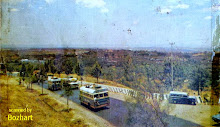The most successful beverage of the new age, however, was Caffè Latte or Coffee Latte. Its popularity was such that by 1991 it accounted for 75 percent of all sales from the coffee carts that brought espresso to the streets of Seattle.It was marketed as an Italian version of the better known French combination of brewed coffee and warmed milk, café au lait, but with a more discernible coffee taste as a result of using espresso.
That said, its primary attraction was that the steamed milk used in the latte made it taste significantly sweeter than cappuccino.This was the moment that Caffè Latte or Coffee Latte (two words) became codified as an espresso-based beverage served at the coffee cart, bar, or shop as opposed to the Italian caffèlatte (one word) that was prepared with a home-brewed moka.
At first it was served as, in effect, a latte macchiato, with the espresso shot poured into a transparent glass already containing the steamed milk, but now topped with a small head of foam.This produced a spectacular theatrical effect as the espresso blended into the steamed milk, gradually changing the beverage’s color, while leaving a white head on top. This is still highly popular in the German market.
A quicker method of preparation for Anglo-American operators, however, was to reverse the process by beginning by delivering an espresso shot into a wide-brimmed cup that could be placed directly under the portafilter and then adding the steamed milk topped with foam. Some theatrical “value added” and sense of artisanship could be produced by training baristas to pour “latte art” onto the beverage.The difference between cappuccino and Caffè Latte or Coffee Latte at this point revolved around the preparation and proportion of the milk used.
FROTHING MILK FOR CAFFE LATTE OR COFFEE LATTE
Steaming milk is simple: the wand is placed deep into the pitcher and the steam is turned on. The milk is warmed but does not expand. Frothing milk requires the introduction of air alongside the steam by putting the tip of the wand in close to the surface of the milk so that air is sucked in, filling the milk with bubbles. When poured, the steamed milk in the body of the jug will emerge first, followed by the foam from the top.
The standard food service definition was that cappuccino consisted of equal proportions of espresso, steamed milk and frothed milk, so the difference between this and the caffè latte lay simply in the proportions of the two types of milk poured into the cup. This meant as Nick Jurich argued in his highly influential 1991 guide Espresso from Bean to Cup, that “the line between a Caffè Latte or Coffee Latte and a cappuccino becomes quite vague.”
Some operators have attempted to redifferentiate the two beverages by increasing the frothed proportion of the cappuccino, benchmarking their baristas’ success to the height, rather than the quality, of the foam.This has resulted in a shift from the “wet” version of cappuccino, comprising equal portions of steamed and frothed milk, to the “dry” version composed largely, if not entirely of an airy “macrofoam” that comes from intensive frothing.
The high end of the specialty industry, however, has increasingly sought to “texture” milk by creating a vortex on the surface that helps to “spin and stretch” the milk and results in tentirety being transformed into a creamy, smooth, microfoam. David Schomer, a specialist in “espresso preparation as a culinary art” who founded Seattle’s Espresso Vivace in 1988, argues that because “ultra-fine texture is the only desirable foam consistency for espressomaking,” the main distinction between the two beverages is that cappuccino is served in a ratio of 5 parts milk to 1 part espresso in a 6- or 7-ounce cup, whereas Caffè Latte or Coffee Latte needs a 12-ounce cup and a 6:1 ratio.
SEE ALSO:






